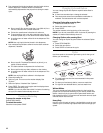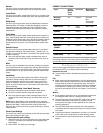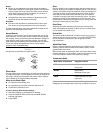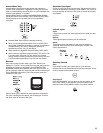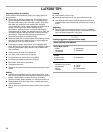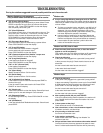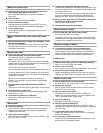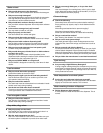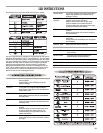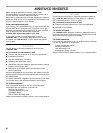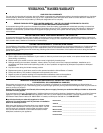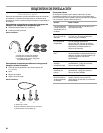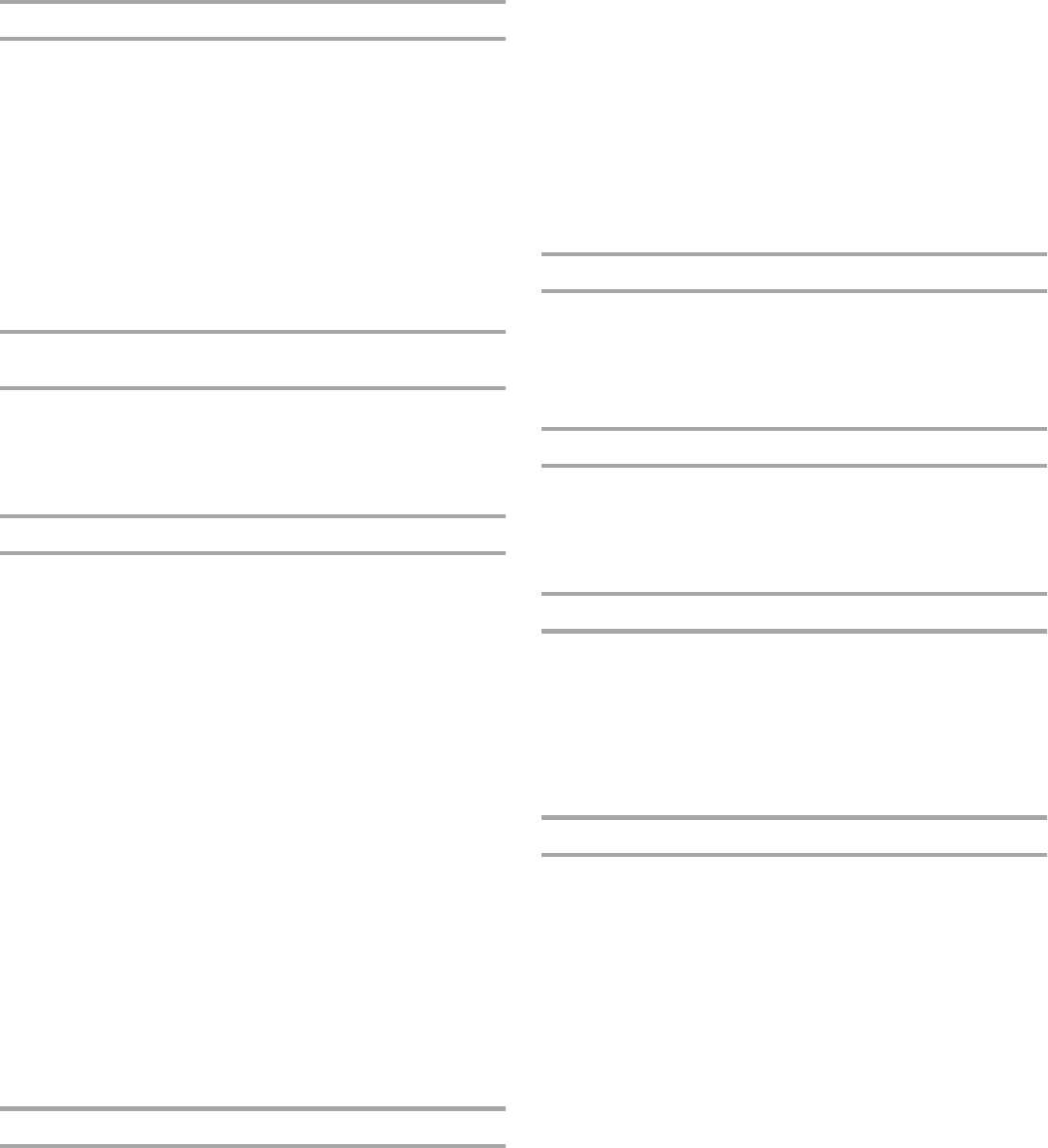
19
Washer won’t drain or spin
■ Is the drain hose clogged, or the end of the drain hose
more than 96" (244 cm) above the floor?
See “Installation Instructions” for proper installation of
drain hose.
■ Is the lid open?
The lid must be closed during operation.
■ Is there excessive sudsing?
Use High Efficiency detergents such as TIDE
®
HE, which
produce less suds. Follow manufacturer’s directions.
■ Is your voltage low?
Check electrical source or call electrician. Do not use an
extension cord.
Washer continues to fill or drain, or the cycle seems
stuck
■ Does the drain hose fit too tightly in the standpipe, or is it
taped to the standpipe?
The drain hose should be loose yet fit securely. Do not seal
the drain hose with tape. The hose needs an air gap. See
“Installation Instructions.”
Washer makes noise
■ Is the load balanced, and is the washer level?
The wash load should be balanced. See “Starting Your
Washer” for maximum load size.
The washer must be level. The front feet should be properly
installed and the nuts tightened. Reset the rear leveling legs if
needed. See “Installation Instructions.”
Are the self-adjusting rear feet installed?
Can you hear water spraying? This is part of the wash action.
If water is drained quickly from the washer, you may hear air
being pulled through the pump. This happens during the end
of draining. It is normal.
When the cycle changes from washing to draining or
spinning, you may hear a noise as the drive system shifts.
This is normal.
■ Are you washing items with metal snaps, buckles or
zippers?
You may hear metal items touching the basket. This is normal.
■ Are you washing a small load?
You will hear more splashing sounds when washing small
loads. This is normal.
■ Is the washer installed on a solid floor?
Refer to the “Installation Instructions” for flooring
requirements.
Washer leaks
■ Check the following:
Are the fill hoses tight? Are the fill hose washers properly
seated? Is the drain hose clamp properly installed? See
“Installation Instructions.”
■ Is the sink or drain clogged?
Sink, floor drain and standpipe must be able to handle 17 gal.
(64 L) of water per minute.
■ Is water bouncing off the tub ring or the load?
The wash load should be balanced and not overloaded. If the
wash load is unbalanced or overloaded, the fill or spray rinses
can bounce off the load.
The washer must be level. The front and rear feet should be
properly installed and the nuts tightened. Reset the self-
adjusting rear feet if needed. See “Installation Instructions.”
■ Did you pull the drain hose from the washer cabinet and
install it in a standpipe or laundry tub?
See “Installation Instructions.”
■ Check household plumbing for leaks.
Washer basket is crooked
■ Are the load balanced and the washer level?
The wash load should be balanced.
The washer must be level. The front feet should be properly
installed and the nuts tightened. Reset the rear leveling legs,
if needed. See “Installation Instructions.”
Dispensers clogged or leaking
■ Is the laundry products in the correct dispenser?
Add the correct amounts of detergent, fabric softener or
chlorine bleach to the correct dispenser. Add powdered or
liquid color-safe bleach to the detergent dispenser. Do not
use the chlorine bleach dispenser for color-safe bleach.
Load too wet
■ Did you use the right cycle for the load being washed?
Select a cycle with a higher spin speed.
■ Did you use a cold rinse?
Cold rinses leave loads wetter than warm rinses. This is normal.
■ Did you use regular laundry detergent?
Regular detergent can cause too much suds and leave the
load wet. Use High Efficiency detergents such as TIDE
®
HE.
Residue or lint on load
■ Did you add detergent to the dispenser?
For best results, use the dispenser to dissolve the detergent.
■ Did you sort properly?
Sort lint givers (towels, chenille) from lint takers (corduroy,
synthetics). Also sort by color.
■ Did you overload the washer?
The wash load must be balanced. See “Starting Your
Washer” for maximum load size. Lint can be trapped in the
load if overloaded. Wash smaller loads.
■ Check the following:
Was paper or tissue left in pockets?
■ Did you use enough detergent?
Use High Efficiency detergents such as TIDE HE. Follow
manufacturer’s directions. Use enough detergent to hold the
lint in the water.
■ Is your water colder than 60°F (15.5°C)?
Wash water colder than 60°F (15.5°C) may not completely
dissolve the detergent.
■ Are you using a gentle wash cycle?
Consider using liquid detergent for slow-speed cycles such
as Bulky Items, Hand Wash or Wool.




